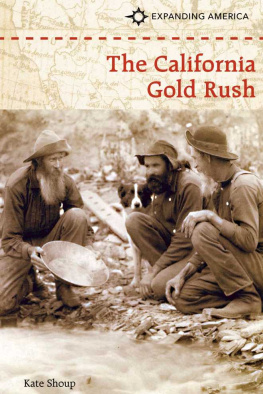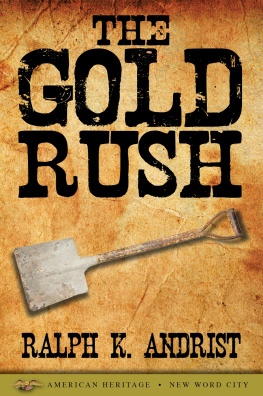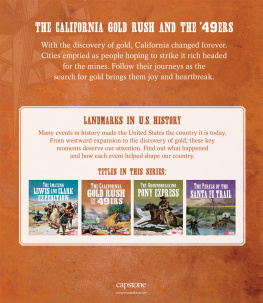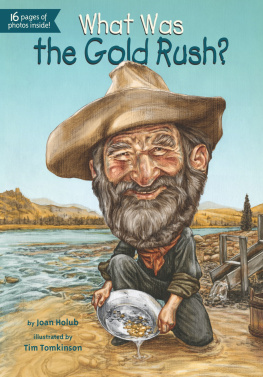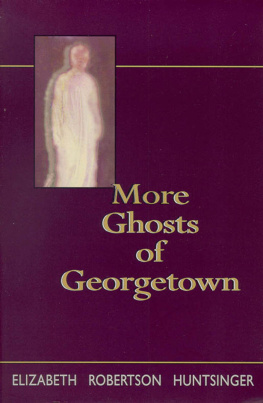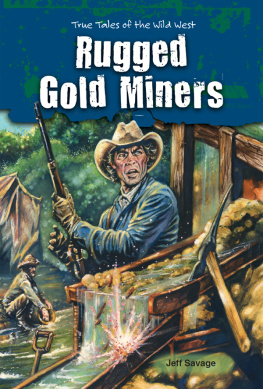

Published by Haunted America
A Division of The History Press
Charleston, SC 29403
www.historypress.net
Copyright 2014 by Linda J. Bottjer
All rights reserved
Unless otherwise noted, all images appear courtesy of the author.
First published 2014
e-book edition 2014
ISBN 978.1.62584.994.6
Library of Congress Cataloging-in-Publication Data
Bottjer, Linda J.
Gold rush ghosts of Placerville, Coloma, and Georgetown / Linda J. Bottjer.
pages cm
Includes bibliographical references.
print edition ISBN 978-1-62619-459-5
1. Ghosts--California--Placerville. 2. Ghosts--California--Coloma. 3. Ghosts--California--Georgetown. 4. Haunted places--California--Placerville. 5. Haunted places--California--Coloma. 6. Haunted places--California--Georgetown. I. Title.
BF1472.U6B68 2014
133.10979441--dc23
2014017146
Notice: The information in this book is true and complete to the best of our knowledge. It is offered without guarantee on the part of the author or The History Press. The author and The History Press disclaim all liability in connection with the use of this book.
All rights reserved. No part of this book may be reproduced or transmitted in any form whatsoever without prior written permission from the publisher except in the case of brief quotations embodied in critical articles and reviews.
DEDICATION
To my dear friends Margaret Hinck, Stella White and Connie Nelson, along with Pat and Sylvia Belanger and Kathy James, who all provide infinite wisdom and incredible strength and always make me snort with laughter.
CONTENTS
ACKNOWLEDGEMENTS
This books research actually began in the late 1960s. I was in elementary school when my family moved into an 1840s farmhouse in central New York. Decades of shoddy renovations had left the Federal-style house in desperate need of a major overhaul. My architect father, determined to restore its original understated symmetrical design, made it a family project. With sledgehammers almost bigger than ourselves, my late brother John and I were told take it down.
The houses past revealed itself in the forms of nineteenth-century crockery and vermin carcasses. In the two-story barn, we discovered old newspapers, used as insulation, pasted across old boards. As each was removed, we read the weathered paper. Much of 1849 news focused on Oneida County citizens, struck by gold fever, gone to California. The romanticism of the gold rush grabbed me then and never let me go.
At the same time, Dory Marriott, a family friend, gifted us with a book on the Loomis familyupstate New Yorks equivalent of the Jesse James gang. She also told us our house had been a place for the gang to store their stolen loot.
While hidden treasure eluded us, the knowledge of our houses former occupants explained the odd things that happened. Strange sounds, outside of the normal old house creaks, and unusual shapes at the top of the stairs, down in the unfinished basement or outside by the side yard were accepted as normal and not feared. The otherworldy residents in my childhood home led me to accept the existence of ghosts worldwide, particularly here where the spirits of the gold rush era are found.
This book would not have been completed without the help of others. Thank you to Thomas Leigh, whose words of capturing whims, dreams and aspirations propelled me to become a better writer. Thank you to Jarrett Bottjer, who often participated in adventures near and far away from home.
Jody Franklins guidance and enthusiasm, as the director of the El Dorado County Visitors Authority, has proven invaluable over the past five years. When asked for information or a contact, her instant responses, and those of other staff members, has been much appreciated.
Superintendent Jeremy McReynolds of the Marshall Gold Discovery State Historic Park in Coloma graciously allowed me access to the parks vast resources on the gold rush from where it began. Park employee Gerald Kesslers professional and personal historical knowledge made days spent researching not only enlightening but fun as well.
To the El Dorado County Historical Museum Research Rooms staff and volunteers who welcomed my questions, shared their personal experiences and gladly brought me books, newspaper clippings and photosthank you.
Thanks also to the City of Placervilles Planning and Zoning Department for letting me sit in their conference room and pore through old, almost forgotten books in search of Main Street history.
Much of my gratitude goes to the merchants, fellow history lovers and those with a real connection to the supernatural who willingly shared their stories and experiences, folklore tales and time with me.
To you, the reader, this book will allow you to discover the supernatural wealth of Gold County from her places to her peopleboth dead and alive.
Hopefully you will have a chance to explore our spirited history soon.
INTRODUCTION
They came by the thousands, all driven by a single dream: gold. As part of one of historys largest mass migrations of people, Argonauts trekked across continents or sailed for months from distant ports. Upon arrival in California, many headed first to the foothills of the Sierra Nevada, where the gold rush began in 1848. James Marshalls discovery of golden flecks alongside the American River shoreline in Coloma forever altered lives, including his own.
Nearby settlements of Georgetown and Dry Diggins, later to be called Hangtown and Placerville, rapidly built up. Blisters bloomed on the hands of European aristocrats, booksellers from Boston and Chinese coolies as they all swung pickaxes through hard rocks and panned freezing waters of rivers and creeks.
Prospectors enthusiasm to strike it rich soon collided with reality as the harsh lifestyle and backbreaking work took their toll. Hard times, hunger and poverty were often the only reward, followed by sickness and death.
Such was the fate of Robert Salle James, the father of future outlaws Frank and Jesse James. He arrived in Placerville sometime in early August 1850 to dig for gold and preach to his fellow miners. By August 18, he was dead of cholera. Jamess burial was like that of many unfortunate souls. A grave was hastily dug, and rarely in a cemetery. Before the dead were laid to rest, mourners would typically search the gaping hole for any signs of the precious metal. If none was found, the corpse was placed in the makeshift grave and covered with a few shovelfuls of dirt.
No marker commemorated their final resting spots, leaving friends and families across the globe to always wonder the outcome of a loved one.
Their restless souls still inhabit the places where they once lived and died. This is not surprising if one considers the number of bodies still under the foundations of nineteenth-century buildings, especially along Placervilles Main Street.
Murder and mayhem were gold rush byproducts. Punishment often came with a noose thrown over a trees sturdiest branch. Violent men in life live on in a violent afterlife.
To the richly toned tapestry of our local gold rushs history, I have woven in stories of El Dorado Countys spirited past. They were gathered through oral interviews from those who have experienced them. Newspapers of the nineteenth, twentieth and twenty-first centuries provided more information, as did books, videos and long-forgotten city records.




